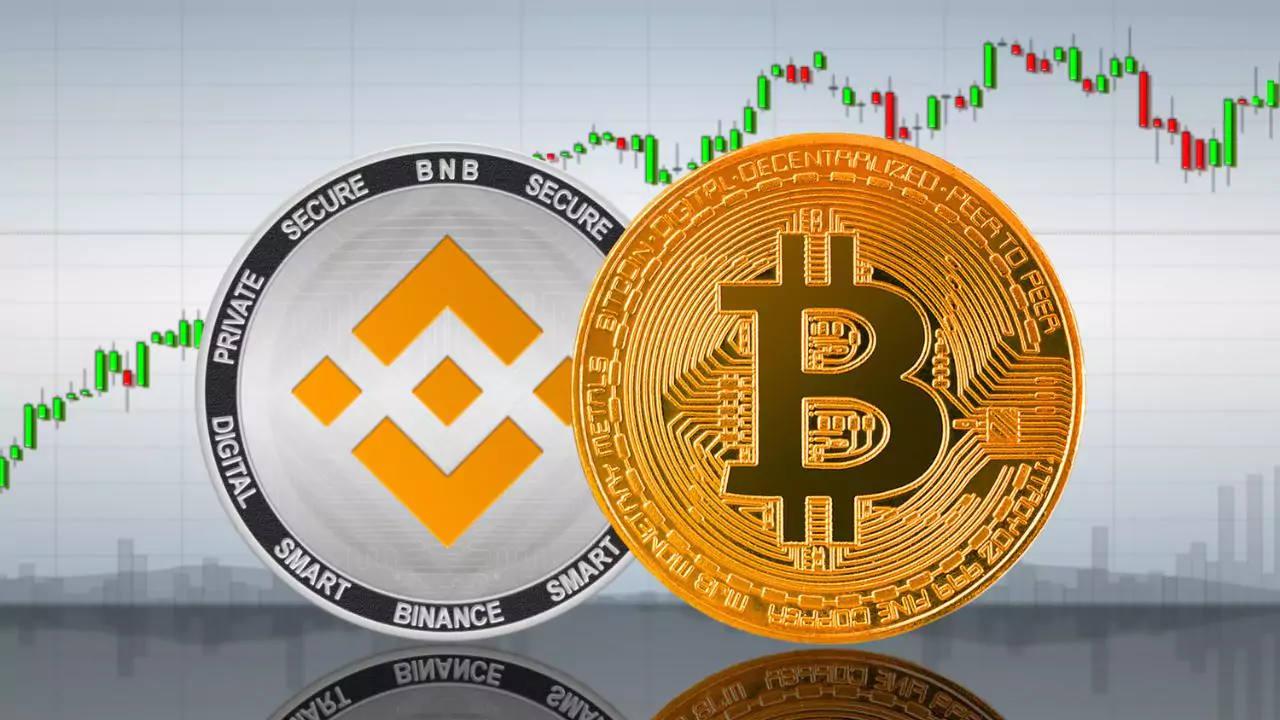The world of cryptocurrencies is vast and ever-evolving, with over a decade of innovations, challenges, and stories of fortunes made and lost. Amidst this dynamic landscape, two names frequently emerge as titans of the industry: Bitcoin and Binance Coin. Bitcoin, often hailed as the original cryptocurrency, revolutionized the financial world with its introduction in 2009.
It promised a future where transactions could be made without intermediaries, offering a decentralized form of digital cash. On the other hand, Binance Coin, or BNB, represents the new era of crypto tokens, specifically tailored for and by cryptocurrency exchanges.
Introduced by Binance, one of the world’s largest crypto exchanges, BNB showcases how platforms can create their own ecosystems, enhancing user experience and expanding utility.
While both these cryptocurrencies operate within the same realm, their origins, purposes, and trajectories are distinct, making their comparison both intriguing and essential for enthusiasts and investors alike.
Join the ranks of successful crypto traders by leveraging the features and capabilities of Immediate Motion trading platform, a reliable platform for achieving your trading goals.
Origins and History
- Bitcoin: Launched in 2009 by the enigmatic figure, Satoshi Nakamoto, Bitcoin was the first cryptocurrency, designed as a decentralized digital currency without a central bank. Its whitepaper proposed a system where transactions are verified by network nodes through cryptography and recorded on a public ledger called a blockchain.
- Binance Coin (BNB): BNB’s journey began in 2017 when Binance, a cryptocurrency exchange, introduced it during its Initial Coin Offering (ICO). Initially created as an ERC-20 token on the Ethereum blockchain, BNB was used to offer trading fee discounts to Binance users.
Technical Foundations
Bitcoin: Operating on a decentralized model, Bitcoin uses a proof-of-work consensus mechanism. Miners solve complex mathematical problems, and upon solving them, they add transaction blocks to the Bitcoin blockchain. This decentralized nature ensures security and reduces the risk of double-spending.
Binance Coin: BNB has undergone significant evolution. From its initial days as an ERC-20 token, it transitioned to Binance Chain, Binance’s native blockchain, in 2019. This move was designed to increase the speed of transactions and expand BNB’s use cases beyond just fee discounts.
Utility and Use Cases
- Bitcoin: Often dubbed “digital gold,” Bitcoin’s primary use case is as a store of value. Its decentralized nature and capped supply (only 21 million Bitcoins will ever exist) have made it a hedge against inflation for many investors.
- Binance Coin: BNB’s utility has expanded in tandem with Binance’s growth. Initially introduced for trading fee discounts, its use cases now include transactions on Binance’s Decentralized Exchange (DEX), participating in token sales on the Binance Launchpad, and even making in-app purchases in certain applications.
Economic Models and Tokenomics
- Bitcoin: With a capped supply, Bitcoin’s scarcity is one of its defining features. Approximately every four years, a “halving” event occurs, reducing the rewards miners receive for adding new blocks to the blockchain. This event can influence Bitcoin’s price due to the reduced rate of new Bitcoin entering the market.
- Binance Coin: Binance employs a “burning” mechanism for BNB. Every quarter, Binance uses a portion of its profits to buy back and destroy, or “burn,” BNB, effectively reducing its overall supply. This deflationary tactic can increase scarcity and potentially drive up BNB’s value.
Regulatory Landscape
- Bitcoin: As the first cryptocurrency, Bitcoin has faced regulatory scrutiny from governments worldwide. While some nations have embraced it, others have imposed strict regulations or outright bans, often citing concerns about money laundering or its potential to disrupt traditional financial systems.
- Binance Coin: 2021 was a challenging year for Binance from a regulatory perspective. Several countries, including the UK, Japan, and Malaysia, took action against the exchange for operating without necessary licenses. Binance has since been proactive, seeking licenses where required and enhancing its compliance measures.
Future Outlook and Potential
- Bitcoin: As institutional interest grows and more mainstream financial entities integrate Bitcoin into their offerings, its future looks promising. However, its volatility and regulatory challenges remain concerns for potential investors.
- Binance Coin: With Binance’s continuous expansion into various crypto services, BNB’s potential growth avenues are vast. From decentralized finance (DeFi) platforms to payment systems, BNB’s integration is steadily increasing.
Conclusion
Bitcoin and Binance Coin, while both pivotal in the cryptocurrency domain, serve as emblematic representations of different epochs and visions within the industry.
Bitcoin, the trailblazer, introduced the world to the revolutionary concept of decentralized digital currency, challenging traditional financial paradigms. Its legacy is not just in its technology but in the ethos of decentralization and financial sovereignty it championed.
Conversely, Binance Coin epitomizes the evolution and adaptability of the crypto industry. Born from a specific use case within the Binance exchange, its adaptability and expanding utility demonstrate the industry’s move toward creating holistic ecosystems around platforms.
As we navigate the complexities of the digital currency landscape, understanding the nuances, histories, and potential trajectories of these two giants becomes paramount.
Their stories, while distinct, intertwine in the broader narrative of cryptocurrency’s journey, offering insights into the past, present, and potential future of digital finance.



